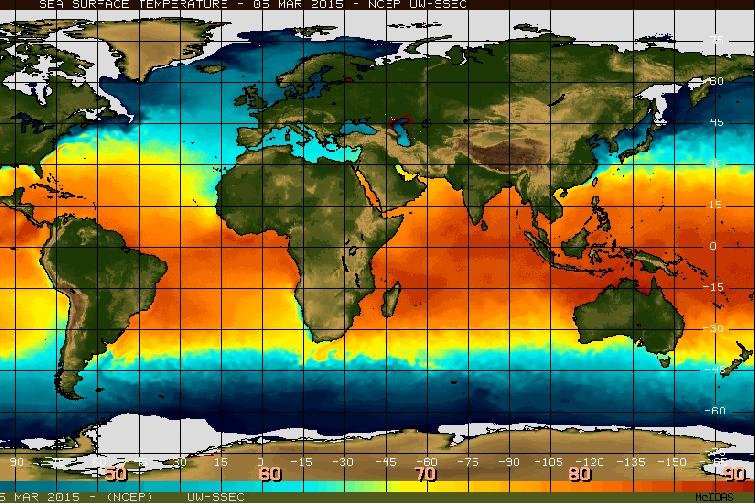Ocean surface temperatures, as of March 2015. Photo by NOAA
LOS ANGELES, March 9 (UPI) -- Scientists have been waiting for nearly two years for a concentration of warming surface water in the Pacific to develop into what known as El Nino. Last week, NOAA announced that it had.
But the latest iteration of El Nino is rather weaker, and climatologists suggest its influence on weather patterns will likely be diminished. Researchers give the conditions a 50 to 60 percent chance of lasting through the summer.
"We're basically declaring El Nino," Michelle L'Heureux, a forecaster at NOAA, told Scientific American. "It's unfortunate we can't declare a weak El Nino."
Because of its late arrival and the system's weak connection between water and atmosphere, El Nino is unlikely to drive heavy rains toward drought-stricken California.
El Nino is a phenomenon known to happen every two or three years, whereby warmer ocean water in the western and central equatorial Pacific dips deeper than usual, preventing upwelling of cold water and enabling surface water to warm faster and more intensely.
When this process becomes strong enough to begin influencing the atmosphere, wind directions and weather conditions, an El Nino is declared.
"Due to the expected weak strength, widespread or significant global impacts are not anticipated," NOAA officials wrote in a press release. "However, certain impacts often associated with El Niño may appear in some locations during the Northern Hemisphere spring 2015."
Though conditions are unlikely to influence California's weather patterns, NOAA says it's possible that rains could be a bit more intense throughout the Gulf Coast this spring and summer.















